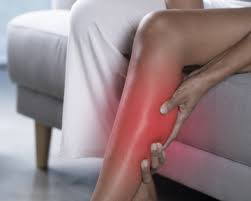Living with a Spinal Cord Stimulator: A Guide to Managing Chronic Pain By Edward…

Low Dose Naltrexone: A New Horizon in Chronic Pain Management
Dealing with chronic pain can be a life-altering experience, affecting every facet of one’s life. As a pain management specialist, I continually explore effective treatments that offer relief without significant side effects. One such promising treatment is Low Dose Naltrexone (LDN).
Originally approved in the 1980s at higher doses for opioid addiction, Naltrexone has been repurposed in much lower doses for chronic pain management. This off-label use is gaining attention for its potential benefits in various chronic pain conditions, including fibromyalgia, chronic fatigue syndrome, and autoimmune diseases.
How Does LDN Work?
At low doses, Naltrexone operates differently from its high-dose counterpart. It’s believed to work by temporarily blocking opioid receptors in the brain, which in turn boosts the body’s production of endorphins, our natural painkillers. This unique mechanism not only helps in reducing pain but also seems to modulate the immune system, which can be beneficial in autoimmune conditions.
Benefits of LDN
One of the main advantages of LDN is its safety profile. Given its low dosage, it’s less likely to cause the side effects commonly associated with higher-dose Naltrexone or other pain medications, like opioids. It’s non-addictive and can be a viable option for those seeking alternatives to traditional opioid treatments.
Patients using LDN have reported improvements in pain levels, reduced inflammation, and better quality of life. However, it’s important to remember that LDN is not a one-size-fits-all solution and may not work for everyone.
Consulting Your Doctor
Before starting LDN, consult with a healthcare professional. As it’s used off-label for chronic pain, your doctor will evaluate if it’s suitable for your condition and oversee your treatment.
Conclusion
In the landscape of pain management, LDN represents a promising, low-risk option for many struggling with chronic pain. Its potential to relieve pain and improve quality of life makes it a treatment worth considering under professional guidance.
If you’re exploring pain management options, remember, effective treatment is not just about managing symptoms but enhancing your overall well-being.
By Dr. Edward Rubin, MD




This Post Has 0 Comments